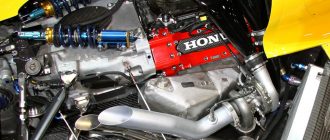What is Turbocharger in Car Engine?
Introduction
A turbocharger is a device that uses exhaust gases to spin a turbine, which in turn drives a compressor to force more air into the engine’s cylinders. This increases the air-fuel mixture, which in turn increases the power output of the engine.
How a Turbocharger Works
A turbocharger consists of two main components: a turbine and a compressor. The turbine is connected to the exhaust manifold, and the compressor is connected to the intake manifold. When the engine is running, exhaust gases flow through the turbine, causing it to spin. The spinning turbine then drives the compressor, which forces more air into the engine’s cylinders.
Benefits of Turbochargers
Turbochargers can provide a number of benefits for car engines, including:
- Increased power output
- Improved fuel economy
- Reduced emissions
Drawbacks of Turbochargers
There are also some drawbacks to using turbochargers, including:
- Increased complexity and cost
- Increased potential for engine damage
- Reduced reliability
Types of Turbochargers
There are two main types of turbochargers: single-turbochargers and twin-turbochargers. Single-turbochargers are the most common type, and they use a single turbine to drive a single compressor. Twin-turbochargers use two turbines to drive two compressors, which can provide even more power than a single-turbocharger.
Conclusion
Turbochargers can be a great way to increase the power output of a car engine. However, it is important to weigh the benefits and drawbacks of turbochargers before deciding whether or not to install one on your car.




